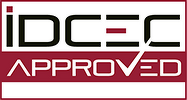
International Design Continuing Education Council Inc.
It is the mission of the International Design Continuing Education Council Inc. (IDCEC) to serve as the premier advocate for continuing education approval and registry services.
Click to Learn More About the International Design Continuing Education Council Inc.
Visit www.idcec.org and Join Now!